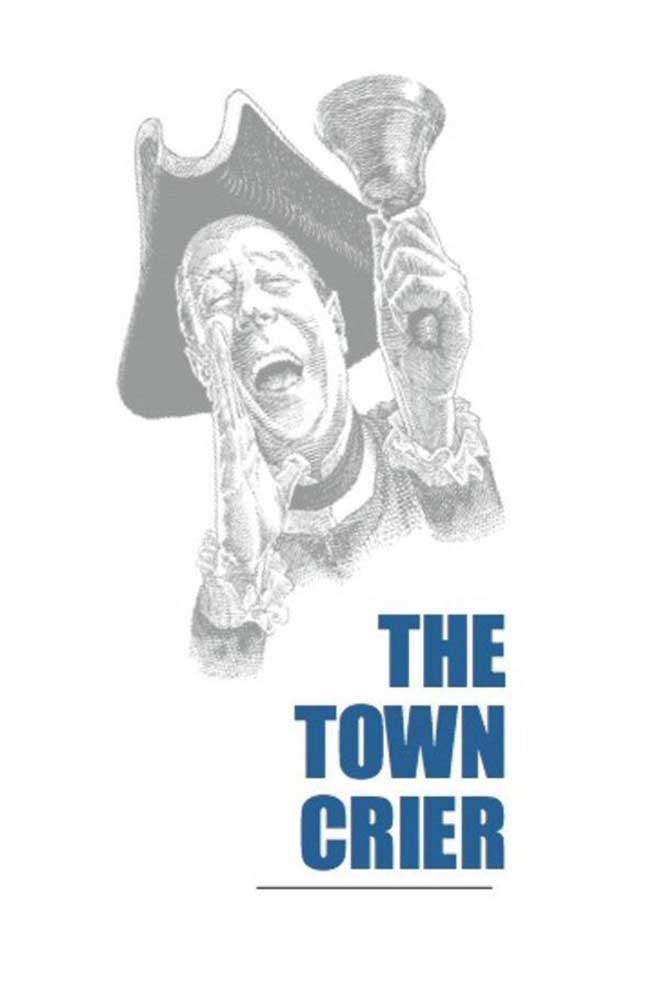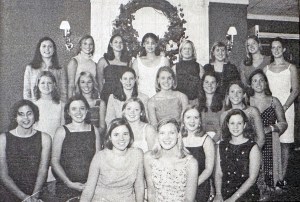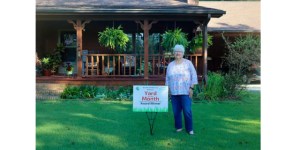The Town Crier: Photo finder (part one)
Published 4:00 pm Thursday, January 18, 2024

- The Town Crier
The vast majority of photographs are of people or scenery, or both. Hey look, there’s Dad posing in front of the Grand Canyon! There’s the family in front of the Christmas tree all wearing their pajamas! There’s grandma sitting on a porch swing somewhere! Ah, the wonderful memories.
And when looking at pictures, that’s what most folks focus on. But the Town Crier always likes to take a closer look at things. When looking at photos, especially older ones, I take my time and try and see what the folks are wearing, for example. I look for cars in the background, or furniture or animals. In that Christmas picture of the family, I’ll look to see if I can read the boxes of the opened presents to see what toys the kids got. I’m curious like that. For me, pictures are like a time machine that can take us back to last Thanksgiving or back to World War II days or even older.
Trending
Gone forever
One time, relatives from Chicago came down and one of them, having seen a “cute project that you’ll just love,” did a “surprise” gift to my grandmother. She went through old photo albums, took out one-of-a-kind pictures, and cut out just the faces of family members. She then put them on a stiff paper backing and poured Mod Podge (a kind of clear hobby glue) on the snippets of the faces cut from the pictures, glueing them in place. The rest of the photograph, with the face hole in it, was thrown away.
When I went to visit, they proudly showed me their wonderful work and all the smiling faces of folks I already knew. I should probably win an Academy Award for the “I’m not mad at all” performance I put on for the sake of family unity. Inside I was seething and broken-hearted that the rest of all those photographs were gone forever.
How many close friends had been scissored out and tossed? How many cool old cars that might jog memories were surgically removed? and how many background clues to our family’s life would never be seen or pondered over by future generations in our family? Personally, I was devastated. and let’s face it, we weren’t Rockefellers, we didn’t have that many family photos to begin with from the old days.
A bookshelf treasure
As a photo detective, whenever I come across a trove of old photos, I get excited and get to work. I recently dug out my copy of “Looking Back,” a photo album of old Dalton area pictures published by the Dalton Daily Citizen in 2001. Dedicated to long-time Dalton newspaper man Mark Pace, my autographed copy is a bookshelf treasure.
Trending
If you go way back Mark Pace had a column called “Pipe Smoke” in the paper that featured his amusing musings on local things, the pipe smoke representing sitting in a comfortable chair and puffing while pondering. Later, he came up with the original “Town Crier” feature of the paper that this column is named for. It was a small collection of funny stories submitted by locals with two or three per issue and usually being anywhere from one to three sentences. Your current Town Crier is a veritable bag of wind compared to those succinct bits.
Perusing the photos inside the “Looking Back” book, like everyone, I first looked at the people’s faces featured there, but soon put on my deerstalker cap (that’s in reference to the houndstooth cap Sherlock Holmes wore, with bills in front and back so you couldn’t tell which way he was facing in the dark), and started looking at the backgrounds. Previously, I have looked through old telephone books and gone through the precursor to that, the City Directory, to recall and discover old businesses from our area. But here was a new source to snoop and search, looking for old signs in the photos for all kinds of things. Following, I’ll share some of what I learned.
In the opening pages is a big picture of downtown Dalton looking north on Hamilton Street that looks to be from no later than 1931 and probably earlier. The camera is sitting in the middle of the intersection between Hamilton and Gordon Street.
First, some noticeable things about the streetscape. The streets are paved, and there are gutters and storm drains. Right in the middle of the street there is a metal grate that is a half-sphere sticking up. It’s a black and white photo so I don’t know if it was painted a bright color but it’s big enough, think of a basketball cut in half, that if you ran over it in your car it might blow the tire.
There are street lights along the sidewalk, large, white globes on lampposts. There are telephone poles running down the east side of the street and you can tell they are literally trees that have had their limbs cut off to make the poles.
There are no lane stripes painted on the street, nor lines for parking spaces, and there are no traffic lights or street signs. There are several cars parked along the streets but the traffic at the time the picture was snapped consists of only five cars driving and one horse-drawn wagon.
There are a few people on the sidewalks, and on the street corner is a little kid in knickers and a cap looking exactly like every newsboy you ever saw in a movie. Looking very closely you can see a crowd of people a block away about where Trevitt Hall is.
To the left you can make out half of the Crescent Theater (which burned down in the 1950s) including the ticket booth. Looking way down the street on the left you can see the tower on the corner of the Canon Building. That tower is long gone and I don’t remember ever seeing it.
You can tell which cars are from town and which are from the countryside as some are clean and some are splashed with mud from dirt roads turned to mud by rain. On the right side of the picture are a row of two-story stores where Burr Park is now. Identifiable from the signs out front is the Boyles Bros. Garage, where they sell Cooper tires and National batteries. Two men, one white and one black, stand next to each other, apparently waiting for customers. There is actually a pair of gas pumps there on the sidewalk where people can just pull up in a parking space and “fill ‘er up with ethyl!”
Just this side of the garage is Thomas’ The Crossett Shoe Store, where the catchphrase along the bottom of the sign promises “Makes Life’s Walk Easy.” On the far side of the garage is Sterchi’s Brothers, which I believe is a furniture store, although back then it might have been something different.
On the corner of the next block is the Landmark Building, known then as Hotel Dalton. The awning on the south side of the building reads in large type “SODA.” Downstairs was Broadrick Drug Store and it had a lunch counter, I believe, and hence the soda sign. Also, it appears the photo was taken during the warm months since the windows are open on the buildings.
The next photo is another double page spread that shows the inside of the Dalton telegraph office located in the old depot downtown, where the bar used to be when it was a restaurant. Sitting at the desk is R. Charles Snow, the telegraph operator, and holding a bicycle up is delivery boy Marvin Rogers.
The photo is from May 15, 1896. Snow wears a three-piece suit, and the delivery boy wears a jacket and cap. There were eight lines running out from the telegraph and a hand bell next to it, I suppose to summon the delivery boy. The walls are covered in artwork and a clock. The photo was taken at 1:18 p.m. There’s a small table lamp over the telegraph and there are several potted plants to liven up the place. One of the plants might be a geranium plant. Snow, the operator, has a short haircut and a large, somewhat droopy, mustache. He and the delivery boy both seem amused by the photo opportunity.
On the next page is the Varnell House, originally constructed in 1858. The photo is of the structure when it was a house, and the driveway is dirt. Now the house has been rebuilt from the original materials and added onto as a useful building for the Varnell community.
Below that is a photo of the Dalton Female College from the late 1800s. It had big trees all around and was a two-story-tall brick building with a nice, white picket fence in front. It sat where City Park Elementary School used to stand and which is now part of the Dalton Green where the Farmers Market sets up and they sometimes show outside movies.
In the 1800s photos the houses and log cabins have foundations sitting on rock piles or low pillars to make the house level and also to keep the wood from touching the ground and letting termites get easy access to the wood. The houses here had usually one chimney, either brick or stacked stone, on the outside of the house.
Next week we’ll check out more of the pictures from history and look for clues!
Mark Hannah, a Dalton native, works in video and film production.





